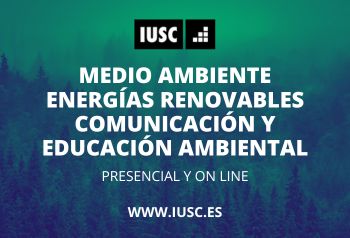Environmental NGOs demand improvement of the ‘Strategic Plan Natural Heritage‘ opposite the COP16 to stop the loss of biodiversity: environmental NGOs demand an improvement in ‘Strategic Plan Natural Heritage‘ to ensure compliance with the Global Framework and halt biodiversity loss by 2030.
From October 21 to November 1, the Conference of the Parties to the Convention on Biological Diversity (COP16)whereby the implementation and monitoring of what has been agreed in the Kunming-Montreal Global Biodiversity Framework approved in Canada, in 2022.
The parts of Convention on Biological Diversity must submit their national action plans to them meet the 23 objectives of COP15. So far, only 16 countries have presented plans, including Spain.
Environmental NGOs have the ‘Strategic Plan for Natural Heritage and Biodiversity‘, which is presented in the following COP16and conclude that without a much stronger commitment, the international objectives of the Global biodiversity framework.
Stop biodiversity loss by 2030
According to environmental organizations, the ‘Strategic Plan Natural Heritage‘Improves the previous plan, but lacks the necessary ambition halt biodiversity loss by 2030 It is essential that this is expanded.

He ‘Spanish Strategic Plan for Natural Heritage and Biodiversity (PEPNyB)‘ was published on January 31, 2023, with Spain being one of the first countries to present a strategy to tackle biodiversity loss and meet the Global biodiversity framework to 2030.
Environmental NGOs have conducted a detailed analysis of the ‘Strategic Plan for Natural Heritage and Biodiversity‘, to assess whether this document meets the necessary requirements to address the issues Global biodiversity framework.
According to environmental NGOs, the document provides a global diagnosis of the state of existing biodiversity in the country, recognizing the significant loss of biodiversity that has occurred in recent decades and identifying the main direct threats and some indirect factors driving this loss . of biodiversity.
The ‘Spanish Strategic Plan for Natural Heritage and Biodiversity (PEPNyB)’ only partially covers the Global Biodiversity Framework, with objectives that address some of the 23 objectives of the global framework, and focuses the objectives on 8 priority areas of action, trying to address some of the important issues that had not been thoroughly addressed until nowsuch as improving knowledge of biodiversity and continuous assessment of the status of biodiversity, a very necessary aspect for adequate decision-making.
Another positive aspect is that the new Plan significantly increases the budget for certain actions compared to the previous Plan (2011-2017). In addition to the plan, the organizations also recognize the Spanish government’s commitment to the plan Global biodiversity frameworkas one of the countries that demanded high ambitions in the objectives of the agreement in the COP15.
Global biodiversity framework
However, according to the evaluation and analysis of environmental NGOs, it is true that The document lacks sufficient ambition and contains some shortcomings that need to be corrected so that it becomes a truly effective tool to address the emergency we are experiencing due to the unprecedented biodiversity crisis in which we are immersed.
The organizations regret that the document was prepared without a genuine process of civil society participation and without the in-depth involvement and cooperation of other ministries, departments and administrations whose policies and actions have clear impacts on biodiversity.
That’s why the MITECO of powers in some matters, and without adequate governance mechanisms and/or the development of specific sectoral plans prepared jointly with the relevant ministries or departments, there is a risk that the plan will be another failed attempt to transform said sectoral policies in favor of biodiversity and do not meet the ambitious objectives of the Global biodiversity framework a 2030.
In concrete terms, environmental NGOs consider that the fact that a large part of the implementation of the actions to achieve the objectives of the plan falls under the responsibility of the Autonomous Communities represents a major challenge, given that so far only limited governance structures exist and few implementation mechanisms, which calls into question the credibility of the plan as an effective tool to achieve the plan’s objectives Global biodiversity framework.
For this reason, the organizations require that the CCAA, within the framework of their competences, develop their regional plans to comply with both National Strategic Plan like with him Global biodiversity framework.
Some objectives of Global biodiversity framework that could be affected by these issues include Goal 3 (30×30) and Goal 12 (green and blue spaces/urban areas) on protected areas and natural connectivity, which depend on coordination and accountability at different levels (national, regional and local government level). governments).
Spanish Strategic Plan for Natural Heritage and Biodiversity (PEPNyB)
The same applies to goal 1 of the Global biodiversity frameworkregarding territorial planning, the ‘Spanish Strategic Plan for Natural Heritage and Biodiversity (PEPNyB)’ does not reflect the importance of urban planning in the loss of Spanish biodiversity, barely taken into account measures guaranteeing binding exclusion zones in favor of biodiversity.
On the other hand, the analysis carried out highlights that the formulation of some objectives and actions included in the plan clearly has room for improvement, as they are not formulated in sufficient detail. Likewise, the document lacks a detailed breakdown of the budget for each measure of the plan, which does not allow an adequate assessment of whether or not it will be sufficient and whether the budget items are intended for the most necessary or urgent actions.
The plan also does not provide details on the indicators that will be used to monitor it, nor does it propose any commitments guaranteeing that the implementation of the actions will be accelerated in the event that the expected progress is not made in achieving the goals and objectives. objectives of Global biodiversity framework.
Finally, with regard to the implementation of the plan, the organizations emphasize that, with regard to the measures to address Goal 10 of the plan Global biodiversity framework which aims to ensure that areas engaged in agriculture, aquaculture, forestry and fisheries are managed in a sustainable manner, there are clear contradictions between the objectives set out in the plan and the policies put into practice in recent years brought.
Particularly in the areas of agricultural policy and water management in Spain, which are not aimed at achieving these objectives, and some important measures that should contribute to Objective 18 of the Global biodiversity framework (identifying and eliminating incentives and subsidies that harm biodiversity) will be implemented quite late. All this indicates that several objectives of the Global biodiversity framework will not be realized under this plan.
I’m looking forward to the next one COP, The organizations have requested a meeting with the representatives of the Ministry who will be present at the meeting, to send them their proposals for the improvement of the ‘Strategic Plan for Spanish Natural Heritage and Biodiversity (PEPNyB)’ and to to defend the highest level of protection of nature. ambition to tackle the biodiversity crisis.
In the same way, environmental NGOs believe that Spain has been one of the first countries to present this initiative and must play a very important role in COP16This new international meeting is an opportunity for them to announce that they will revise the plan to improve and complete the missing aspects.

